- 1957
- Dr. Hamao Umezawa (Director of Department of Antibiotics, National Institutes of Health and Professor of Research Institute of Applied Microbiology, The University of Tokyo) and co-workers discovered kanamycin, a new antibiotic that proved to be highly effective in treating infections caused by antibiotic-resistant strains.
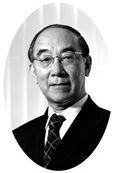
- 1958
- Kanamycin was marketed in Japan as a chemotherapeutic agent for the treatment of infections.
Furthermore, it was marketed in the U.S. and other countries around the world.
The royalties from kanamycin was used to establish the Microbial Chemistry Research Foundation: MCRF (President, Shinji Yoshino; Chairman of the Board, Hamao Umezawa; approved by the Minister of Health and Welfare).
- 1962
- The Research Institute named Institute of Microbial Chemistry: IMC was established in Kamiosaki, Shinagawa-ku, Tokyo (Director, Hamao Umezawa).
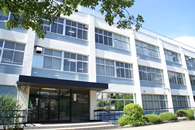
- 1965
- Discovery that kasugamycin exhibited a strong activity against rice blast disease. The compound was shown to have low toxicity; therefore, it was safe as an agricultural chemical.
- 1966
- A new research building was constructed next to MCRF to extend the research program. The clinical effects of bleomycin for the treatment of squamous cell carcinoma were confirmed.
- 1968
- Institute of Episome was established as an affiliated research institute in Fujimi-mura, Seta-gun, Gunma to study the resistant strains and distribution of plasmids (extranuclear genes) involved in resistance.
- 1969
- MCRF hosted the 6th Conference of International Chemotherapy. Bekanamycin was marketed as an antimicrobial antibiotic, while bleomycin was marketed as an anticancer antibiotic.
- 1970
- Kasugamycin was marketed as an antirice blast pesticide, and josamycin was marketed as an antimicrobial antibiotic.
- 1971
- Dr. Tokuji Ichikawa was elected as MCRF President. Dibekacin, a derivative of kanamycin B, was synthesized and shown to be widely effective against several strains, including Pseudomonas aeruginosa.
- 1974
- Institute of Bioorganic Chemistry was established in Ida, Nakahara-ku, Kawasaki-shi, Kanagawa to study organic synthesis.
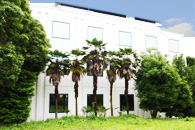
- 1975
- Dibekacin was marketed as an antimicrobial antibiotic.
- 1977
- MCRF hosted a symposium marking the institute’s 15th anniversary. Proceedings: Jap. J. Antibiotics, 30, supplement (1977).
- 1979
- MCRF hosted a symposium marking the 5th anniversary of the Institute of Bioorganic Chemistry. Proceedings: Jap. J. Antibiotics, 32, supplement (1979).
- 1981
- Peplomycin was marketed as an anticancer antibiotic.
- 1982
- MCRF’s contributions to academic research were officially praised. MCRF was then approved by the Ministry of Health and Welfare and the Ministry of Education, Science, Sports and Culture. MCRF hosted the “Trends in Antibiotic Research” symposium.
Proceedings: “Trends in Antibiotic Research,” Ed. by H. Umezawa et al., 1982, Japan Antibiotic Research Association. Aclarubicin was marketed as an anticancer antibiotic.
- 1985
- Institute of Chemotherapy was established in Miyamoto, Numazu-shi, Shizuoka to promote chemotherapeutic and immunotherapeutic research.
The institute was equipped with modern animal experimentation and radiological facilities.
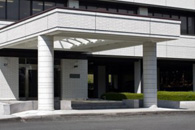
- 1986
- Dr. Hamao Umezawa, the MCRF founder, passed away at the age of 72 years. He was an internationally respected researcher in the fields of medicine, biology, pharmacology, and organic chemistry. His major achievements include the discovery of kanamycin, bleomycin, and kasugamycin are used to promote human health and welfare.
- 1987
- Dr. Tomio Takeuchi (Representative Director) was elected as MCRF Chairman. Ubenimex (Bestatin ®) was marketed as an anticancer antibiotic. MCRF hosted a symposium marking the 25th anniversary of Institute of Microbial Chemistry. Proceedings: “Horizons on Antibiotic Research,” Ed. by B. D. Davis et al., 1988, Japan Antibiotic Research Association.
- 1988
- The Hamao Umezawa Memorial Museum was established in Tamagawa, Setagaya-ku, Tokyo to honor the achievements of the MCRF founder the late Dr. Hamao Umezawa. Pirarubicin was marketed as an anticancer antibiotic.
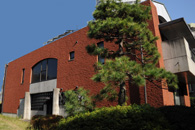
- 1989
- Aivlosin was marketed as an antimicrobial veterinary medicine.
- 1990
- Arbekacin was marketed as an antimicrobial antibiotic.
- 1993
- Prof. Sumio Umezawa was elected as MCRF President.
- 1994
- The New Research Institute annex with library and conference rooms was constructed adjacent to IMC to improve the research environment. Gusperimus (deoxyspergualin) was marketed as an immunosuppressive agent.
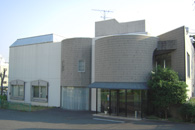
- 1996
- A commemorative ceremony was held.
- 2000
- Shigeo Morioka was elected as MCRF President.
- 2002
- Dr. Tamio Yamakawa was elected as MCRF President. Dr. Yoshiaki Nonomura was elected as MCRF Chairman of the Board of Directors.
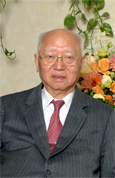
- 2003
- To promote efficiency, MCRF was reorganized into three institutes with IMC, the institute of Bioorganic Chemistry, and the institute of Chemotherapy changing their names to the Microbial Chemistry Research Center (MCRC), the Hiyoshi Medicinal Chemistry Research Institute, and the Numazu Bio-Medical Research Institute, respectively. The institute of Episome was closed. Dr. Yuzuru Akamatsu (Representative Director of MCRF) was elected as MCRC Director.
- 2004
- A memorial lecture meeting was held marking the 90th birthday of the late Dr. Hamao Umezawa.
- 2008
- The MCRF 50th anniversary symposium was held.
- 2010
- MCRC, the Hiyoshi Medicinal Chemistry Research Institute, and the Numazu Bio-Medical Research Institute changed their names to IMC, IMC Hiyoshi, and IMC Numazu, respectively. Dr. Akio Nomoto was elected as MCRF Chairman of the Board of Directors and Director of IMC (Biology).
Dr. Masakatsu Shibasaki was elected as MCRF Representative Director and Director of IMC (Chemistry).
The research organization in IMC was reorganized as follows: Laboratory of Disease Biology, Laboratory of Virology, IMC Numazu, Section of Animal Resources, Laboratory of Synthetic Organic Chemisty, IMC Hiyoshi, Laboratory of Molecular Structure, and Department of Intellectual Property and Public Relations.
- 2011
- On April 1, 2011, MCRF was reincorporated as a public interest foundation.
The Laboratory of Virology was reorganized as the Laboratory of Basic Biology.
Resources Management Section was established.
ZUPREVO (tildipirosin) was marketed as an animal drug in Europe.
- 2012
- ZUPREVO (tildipirosin) was marketed as an animal drug in U.S.A.
Research Cooperation Section was established.
- 2014
- Dr. Masakatsu Shibasaki was elected as Chairman of the Board of Directors of MCRF and Director of IMC.
- 2015
- A new research building incorporating IMC Hiyoshi was completed.
The organization was reorganized, and research got underway at the new location in May.
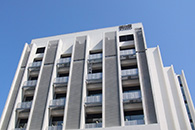
- 2017
- We reorganized Laboratory of Structural Chemistry and Biology into Laboratory of Structural Biology and Laboratory of Molecular Structure Analysis. We reorganized Department of Intellectual Property and Public Relations into Section of Intellectual Property and Public Relations. Resource management Section consolidated into Laboratory of Microbiology, and Research Cooperation Section consolidated into the Secretariat. And System management Section consolidated into the Secretariat, too.
- 2018
- In the Nature Index Japan, it ranked first in Japan's reserch Institutes that published high-quality scientific articles among natural science papers at a high rate in the six years from 2012 to 2017.
- 2021
- The organization was reorganized and became the Laboratory of Molecular Structure Analysis and the Department of Intellectual Property and Public Information.
- 2022
- Dr. Takao Shimizu was elected as Director of IMC. And the Section of Information Management was newly established in the Department of Intellectual Property and Information.
- 2024
- The Laboratory of Synthetic Organic Chemistry and the Laboratory of Medicinal Chemistry were merged to form the Laboratory of Chemistry.









 +81-3-3441-4173
+81-3-3441-4173  office@bikaken.or.jp
office@bikaken.or.jp